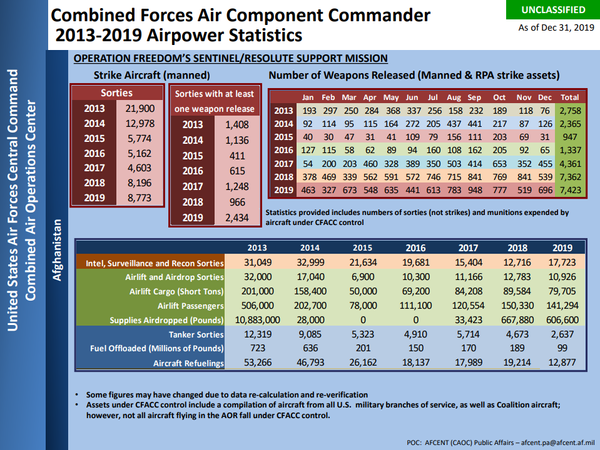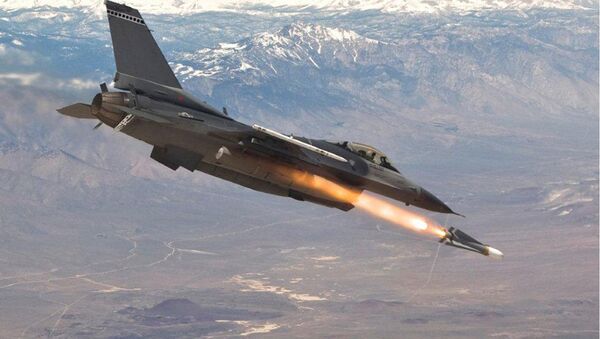New data published by AFCENT shows that US aircraft deployed 7,423 munitions against targets in Afghanistan in 2019 - more than any year since 2006. The data further shows that Operation Freedom’s Sentinel/Resolute Support Mission aircraft flew 8,773 missions in 2019, with 2,434 of them resulting in a weapons release.
The figures include bomb and missile strikes, but also 105-millimeter shells fired by AC-130 gunships as well as strafing gunfire from large-caliber rotary guns like the M61 Vulcan cannon, US military-affiliated outlet Stars and Stripes noted.
As the chart shows, the number dropped in 2019 exceeded that dropped in 2018, which was itself a larger amount of munitions than in the three preceding years combined.

While through much of 2019, US and Taliban leaders engaged in successive rounds of peace talks to end the 18-year-long war, US air attacks on the country continued to accelerate. In August 2019 alone, the month before the peace accord was to be signed, US manned and unmanned aircraft carried out 783 strikes.
Then, just days before the final peace agreement was due to be signed in mid-September, US President Donald Trump called off the deal, and a new wave of intense US air attacks swept the country. By the end of the month, more munitions had been dropped on Afghan targets than any month since October 2010, with 1,043 bombs falling from US aircraft, Sputnik reported.
The UN warned the following month that since the summer, an “unprecedented” increase in the number of civilian casualties had taken place. The quarterly report by the United Nations Assistance Mission in Afghanistan (UNAMA) noted a 42% increase in civilian casualties over the previous year, and July was the single most violent month since records began in 2009. US and allied forces were responsible for just 28%, however, with 46% of the new casualties credited to the Taliban; 11%, or 885 civilian casualties - including 579 deaths - were due to air attacks.
However, casualties cover both deaths and injuries from attacks. UNAMA has also reported that the US and its allies have been responsible for more civilian deaths in the country than the Taliban, which is the primary insurgent force opposing the rule of the Afghan government in Kabul.
Into 2020, US airstrikes have continued to kill Afghan civilians. A drone strike in Shindinad in western Herat province on January 8 killed 10 civilians, including three women and three children, and wounded another five, according to Afghanistan’s Independent Human Rights Commission. The attack targeted Mullah Nangyalia, the leader of a Taliban splinter group, and according to a local Herat lawmaker, the attack also killed him and 15 militants.




